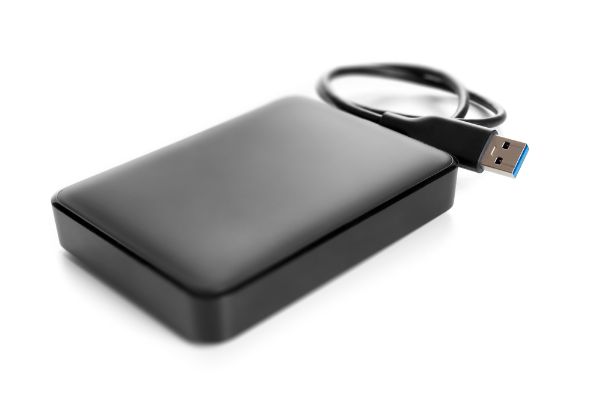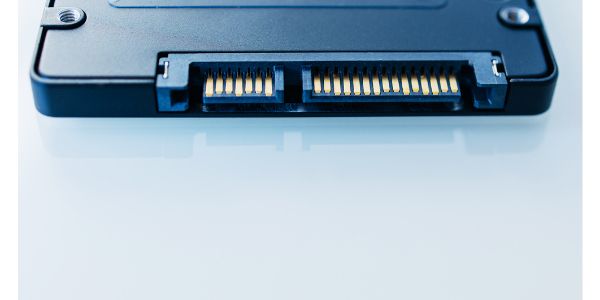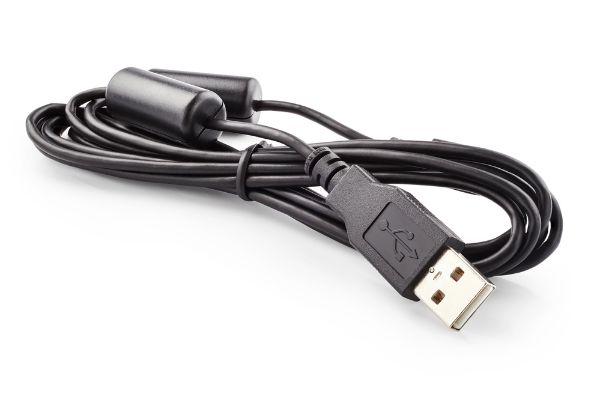Disclaimer: This post may contain affiliate links, meaning we get a small commission if you make a purchase through our links, at no cost to you. For more information, please visit our Disclaimer Page.
Devices and peripherals that are easy to connect to and use with any computer are very popular, and it is easy to see why. Being able to plug things in and use them immediately, instantly increasing the functionality or options available to your computer is super convenient.
Storage is one of the most popular things that users want to be able to expand, modify, or increase their use of quickly. With that in mind, many people wonder about adding or removing hard drives from computers while they are in an active state.
We will go over how you might do this with different hard drives, and we’ll cover some things to be aware of when doing so.
Table of Contents
Can You Plug in an External Hard Drive While PC is on?
Yes, you can plug in an external hard drive while your PC is on if it has a USB connection that plugs straight into your device.
A USB is one of the easiest connections to hot swap in and out of a device, meaning that you can plug it in and start using it right away while the computer is still active.
Most external hard drives are designed as portable units that you can move from one device to another with ease. This makes them ideal storage upgrades that allow you to carry gigabytes or terabytes of data with you.
Can You Unplug the Drive the Same Way?
Typically, yes, you can unplug your external hard drive the same way you just plugged it in.
However, there is a possible caveat here, and that is why we’ve added this section. If you’re new to external hard drives, you may notice that you can select an option to ‘Eject’ or ‘Safely Remove’ the drive you are using.
While this is a good idea, it is not strictly necessary in most cases. Most external hard drives are designed to be plugged in and unplugged with ease.
However, it would be best if you made sure that no programs are running that are using data from the drive when you unplug it. The purpose of using the ‘Eject’ feature is to close the programs that are using the information on the drive before disconnecting it.
This allows you to remove the drive safely without the risk of damage or loss of data. If you make sure no data is being transferred to programs on your computer when you want to unplug the drive, you should be OK doing it manually without selecting options like ‘Eject’ beforehand.
Can I Unplug a SATA Drive While the Computer Is On?
SATA means Serial Advanced Technology Attachment, and it has been the standard for internal PC and laptop hard drives for quite a few years now. We talked about external hard drives in the previous section, and you can think of a SATA drive as the internal drive that comes as standard with most computers.
Because it is generally safe and easy to unplug external hard drives, some users may wonder if the same principles of operation can be applied to internal hard drives.
Typically, it would be best if you did not try to unplug a SATA drive while the computer is turned on.
When the computer is active, the hard drive is active and doing its business. Part of the shutdown process of any computer is to put its components to sleep, and it is only then that you can open things up and unplug them as needed.
However, there is technically a way that you might be able to unplug a SATA drive while the computer is turned on. Before we get into that, it is extremely important to keep in mind that your computer must meet certain requirements and have certain settings to do this safely.
Failure to meet the proper criteria could cause damage to your computer’s components or loss of important data, or both.
Further, although you usually should not try swapping a SATA drive out, it is not the drive that determines the feasibility. Things like the controller, operating system, or motherboard combinations used are what can help you determine if you might be able to hot swap the SATA.
SATA Drive Removal
You can follow these steps to see if your system is eligible able to remove a SATA drive while your computer is powered on.
1. Check the SATA drive’s settings to see if it supports hot swapping. What you’ll really be doing here is checking things in your system to see if you can enable hot swapping between internal drives.
These capabilities vary between controllers and motherboards, so you’ll need to check the specifications on your specific model to see if you can do it.
2. Check your BIOS to enable hot swapping. Provided you have components that will allow for SATA hot swapping; you will still need to enable the feature in your BIOS.
3. In most cases, you can find this feature under a BIOS heading entitled ‘SATA Configuration’ or similar. From there, you should be able to enable the appropriate feature.
Can You Plug an SSD in While the Computer Is On?
We’ve spoken about hard drives and what you can do to swap them, but you might be curious about the other major type of storage that many modern computers use: the solid-state drive or SSD.
An SSD still performs the same basic function as a more traditional hard drive with which you might be familiar. It stores data from your computer on chips of flash memory, while the traditional HDD uses a spinning metal platter.
SSDs are like pluggable USB thumb drives; however, solid-state memory chips will usually be more reliable and able to perform read/write operations faster than their cousins.
To hot plug a solid-state drive, you may have a SATA drive and configuration that allows for hot plugging, and you could do it this way.
It would be like what we discussed with the standard HDD drive above: you would need to ensure your motherboard and other components meet the required specifications. Many modern motherboards meet these standards, but the circumstances can vary from one model to the next.
As before, remember that controllers and enabling certain settings in the BIOS are important factors to consider here. Many SSDs write and store information in a way that is different from an HDD, but other basic principles remain the same. It is also a good idea to remember that some rig setups will have ports or bays that are friendlier to hot swapping than others.
While hot plugging or swapping can be useful, we should note that it is most useful when you need to change a drive very quickly. The usual process of just shutting down the system to gain access to drives to swap them normally is still a good option to consider in many cases.
Finally, note that you may also need to consider certain software that can help you in the hot swapping process. In most cases, this software mirrors actual hot swapping by telling the computer to deactivate the drive so you can swap it safely. In this way, the software helps the drive act more like an ejected USB drive that you can easily remove.
What Else Can I Hot Plug into My Computer?
The most popular devices to want to hot plug are different kinds of hard drives. However, several kinds of accessories are made for hot plugging. You may already use some of these things daily.
Many peripherals are specifically designed with hot plugging in mind to make them quick and easy to use without taking a long time to set up. Here are just a few of the examples of common things you can hot plug besides hard drives:
- Any USB device – including portable pen drives, keyboards, or mice.
- Many peripheral devices – including printers and webcams.
- Depending on the setup, you can hot swap some internal components other than hard drives – including devices like fans.
Some servers even allow you to replace failed power supplies immediately via hot swapping. With an increase in the types of components we use in computers, the list of hot swappable items will continue to grow.
Conclusion
Hot swapping is about providing quick access to a new range of features via the different devices discussed above. In many cases, you can hot swap the drive of your choice after taking appropriate precautions and doing things in the correct order.
Many items designed for hot swapping come equipped with carriers and plugs created to make it easy to change them out. However, just because something you buy looks like it might be hot swappable doesn’t mean it will work flawlessly if you unplug it at the wrong time.
Always check the specifications on your components before doing any hot swapping, to be on the safe side.



